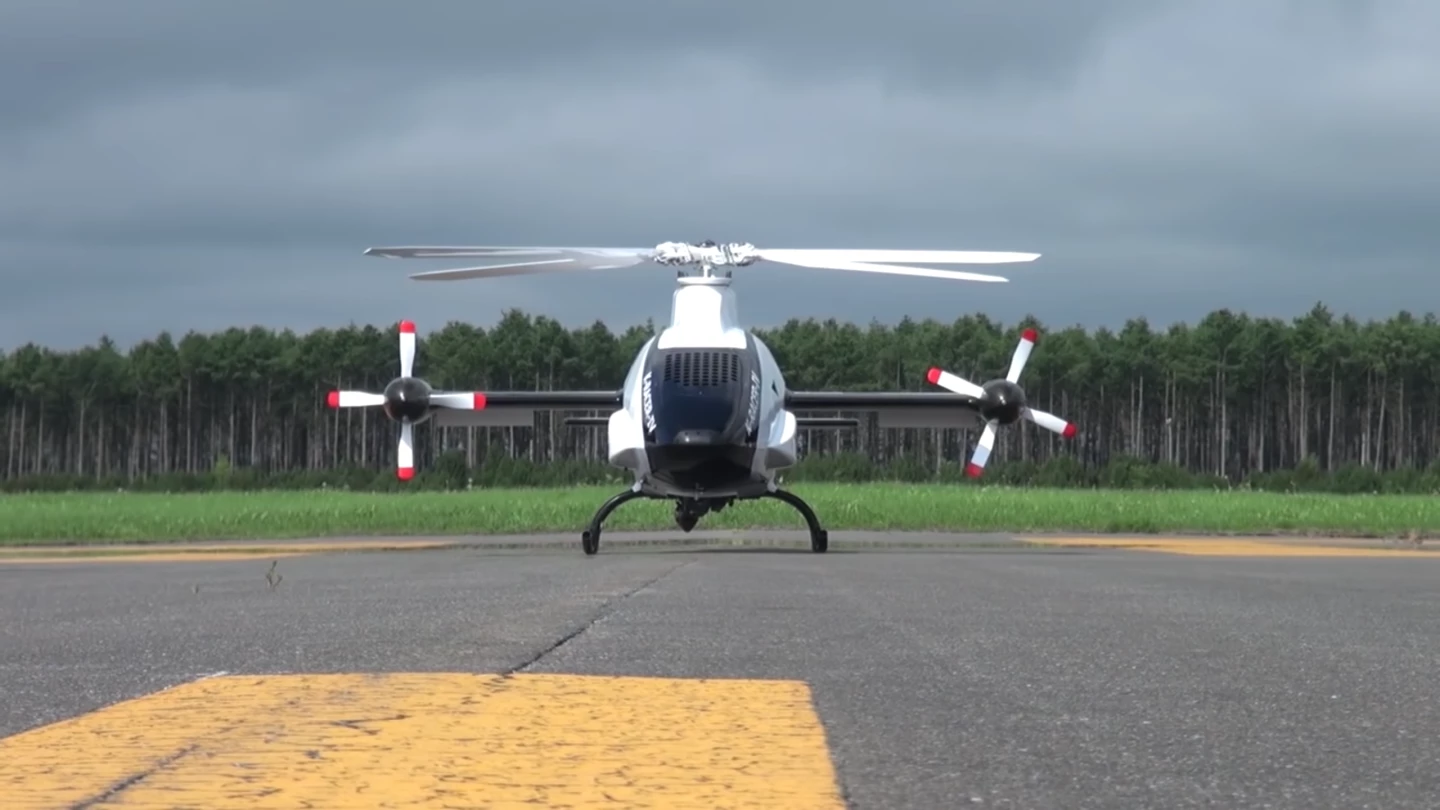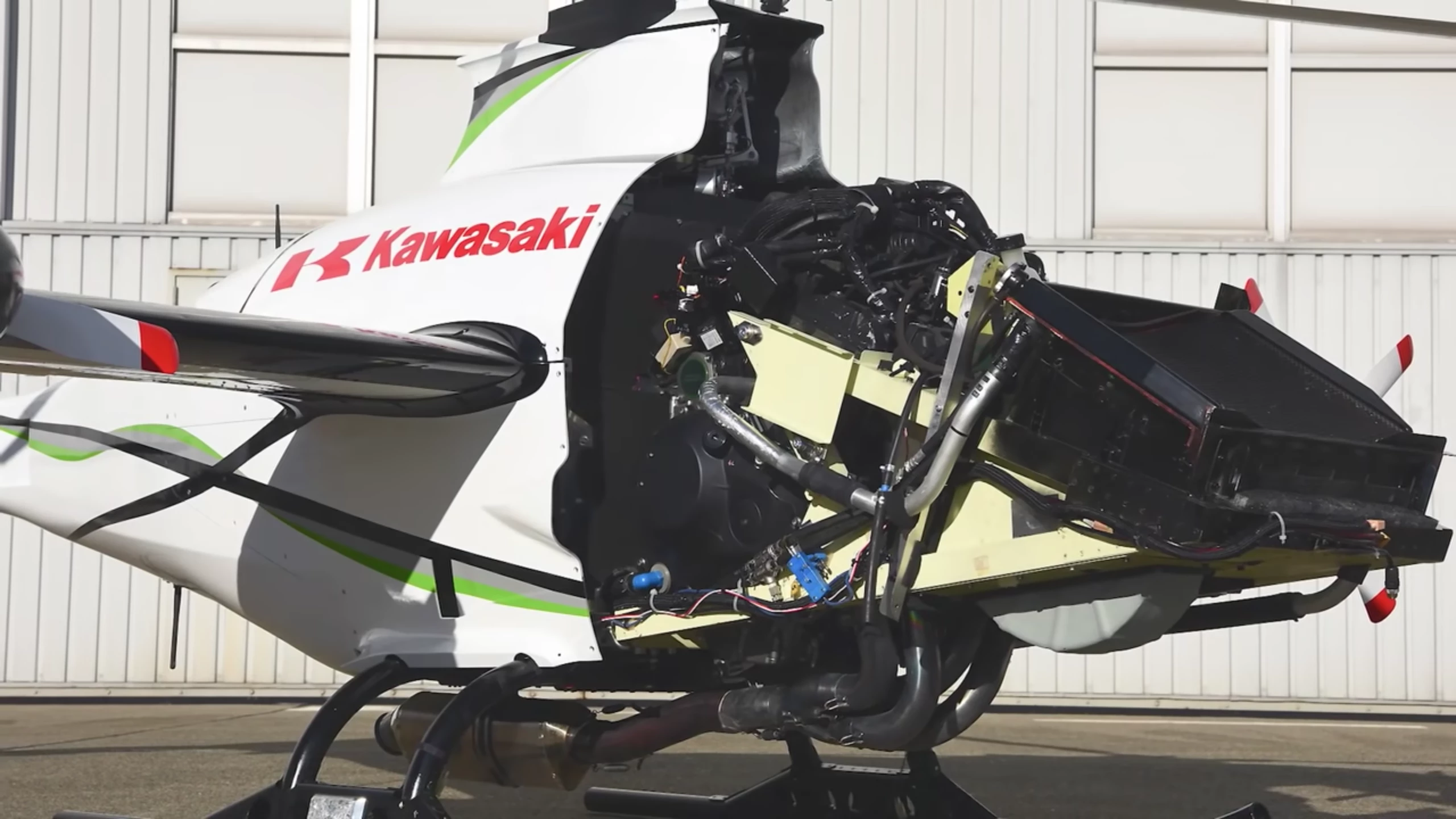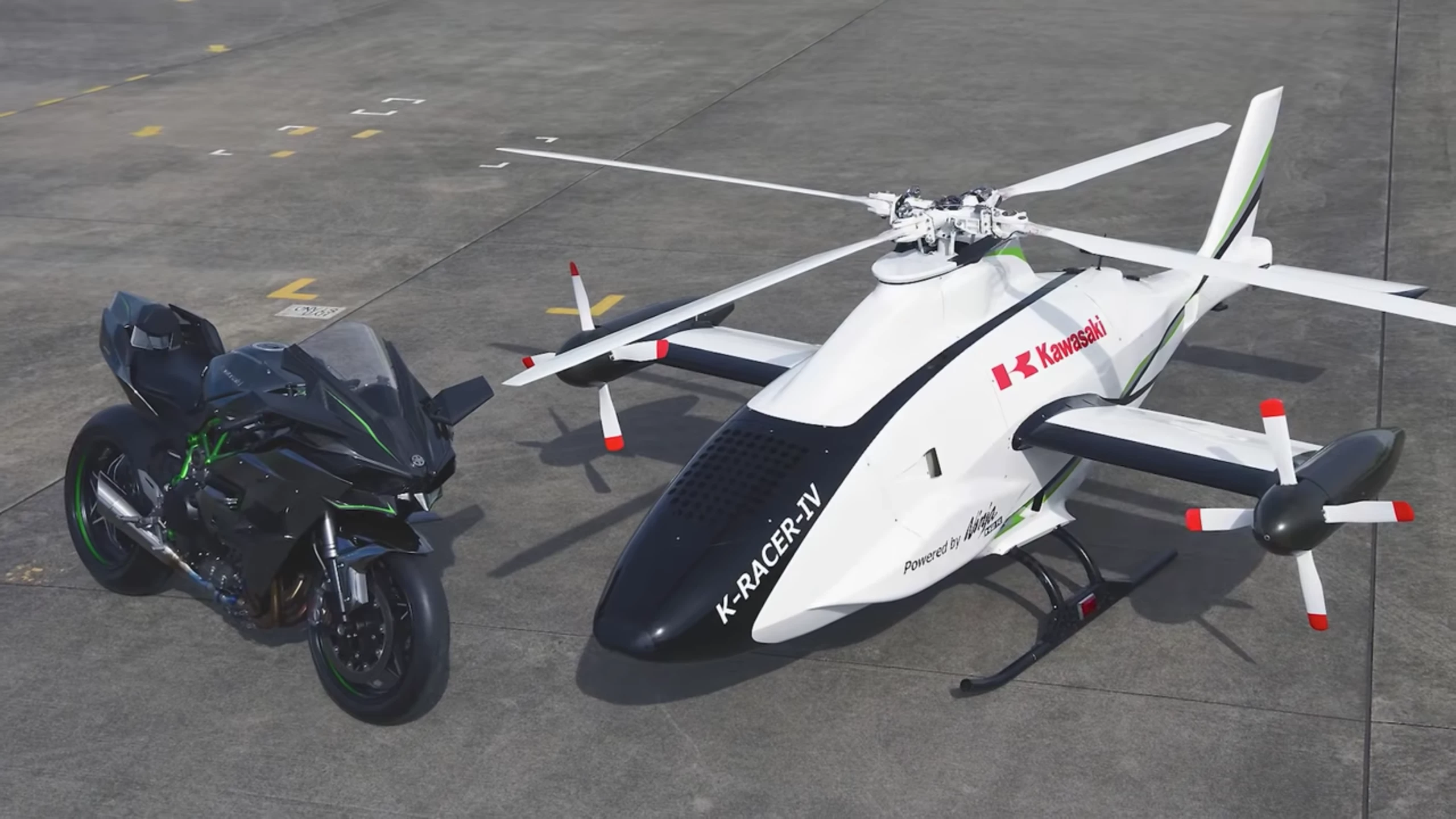It's easy to forget that Kawasaki is much more than a motorcycle company. While its famously crazy motorcycles are certainly the most visible part of the brand outside Japan, Kawasaki Heavy Industries is a 124-year-old industrial colossus that brought in US$15 billion in revenues last year. Only $3.2 billion of that came from the motorcycle and engine division – a further $2.5 billion came in from energy systems and plant engineering, and $2.2 billion from precision machines and robotics.
The largest segment of the Kawasaki empire, contributing $4.6 billion, is its aerospace systems division. Kawasaki makes a small range of military and civilian helicopters, as well as large turbofan engines for various Airbus and Boeing airliners.
So this new K-Racer design is well within the company's wheelhouse. The K-Racer is an unmanned compound helicopter – compound referring to the fact that it uses multiple propulsion systems. Its 4-m (13.1-ft) top rotor looks much like the one on any large helicopter, and it's clearly capable of modifying the angle of its blades as they rotate around the central shaft to give it omnidirectional tilt and movement capabilities.
It has no tail rotor, though, and instead two simple forward-facing props on the ends of its short wings handle the job of yaw control, as well as balancing out the torque from the main rotor so it doesn't go spinning off into the weeds.

Those rotors also generate thrust to move the K-Racer forward in horizontal flight, and Kawasaki says the design gives this thing the ability to fly substantially faster than a conventional helicopter design – much like the Ninja H2R motorcycle (from which the K-Racer's supercharged 300-horsepower engine is derived) can go substantially faster than a conventional bike.
By their very nature, regular helicopters are speed-limited in the air. Each time a top rotor blade moves around in a circle, it spends half its time going forward into the oncoming air on one side of the aircraft, and going backward with the oncoming air on the other. As forward speed increases, the extra airflow on the advancing side gives that side of the rotor disc substantially more lift, and the retreating side loses lift at the same rate. This asymmetry, called retreating blade stall, is the main factor limiting the airspeed of conventional helicopters.
In order to go faster, you need to do something different, like mounting a wing on the retreating-blade side of the helicopter that can generate compensatory lift as speeds increase, or running two top rotors in opposing directions, mounted coaxially.

This Kawasaki design won't completely eliminate the lift asymmetry of that top rotor, but the lift generated by both wings will mean the K-Racer won't have to rely solely on that main rotor once it's moving at a decent pace. So it seems reasonable to expect it'll be capable of higher speeds than conventional designs, although it's difficult to estimate by how much.
For now, this thing is merely a technology demonstrator. Kawasaki has flown it in tests, and shown it to be stable under autonomous control. The company's very Japanese press release says "We will use the results obtained from this test for the development of VTOL (vertical take-off and landing) vehicles, including manned/unmanned helicopters, and for the development of aircraft operation systems in conjunction with various services. We will contribute to society by making the most of our aviation technology, which includes the realization of VTOL systems in the future."
See the K-Racer fly in the video below.
Source: Kawasaki








